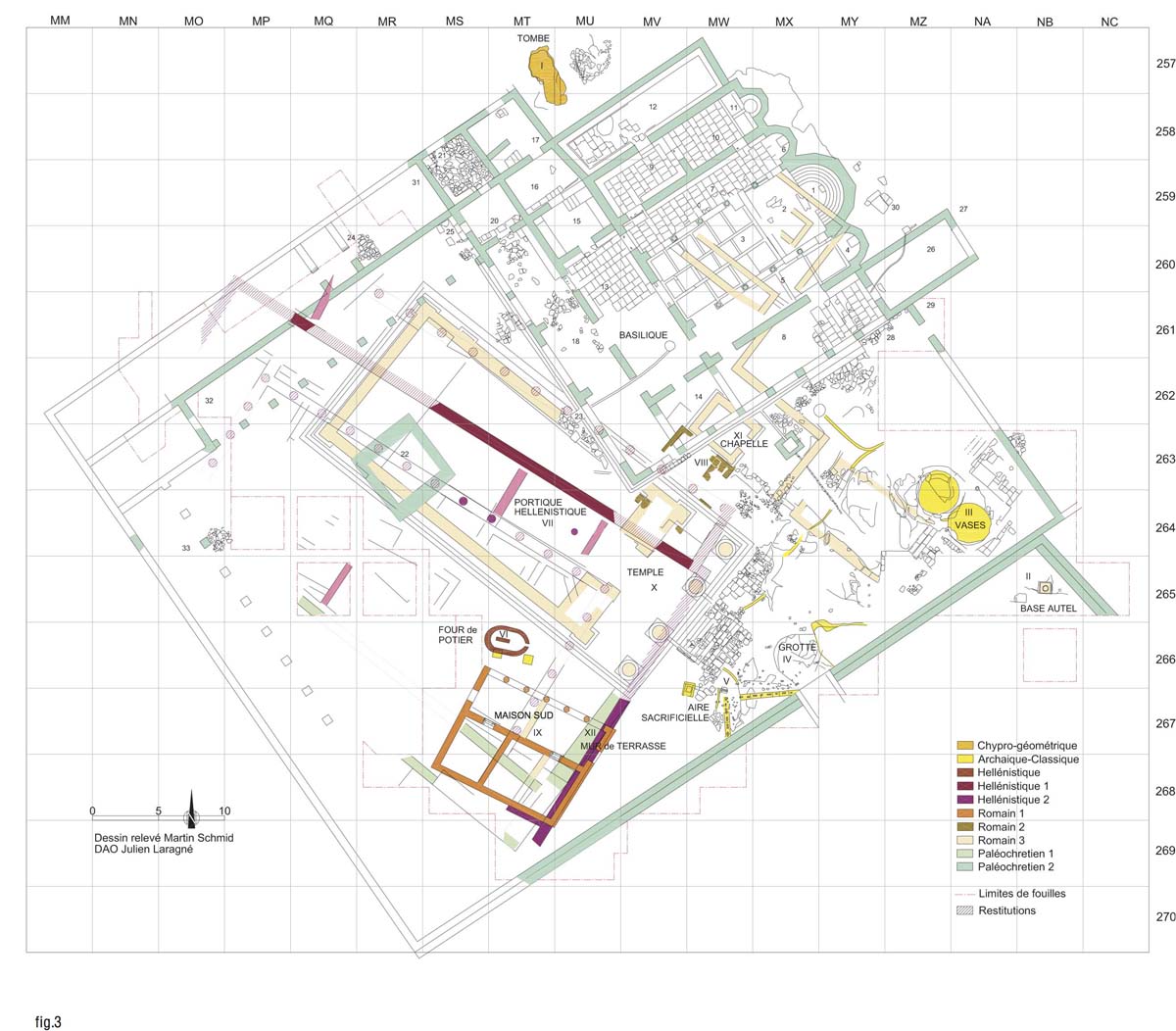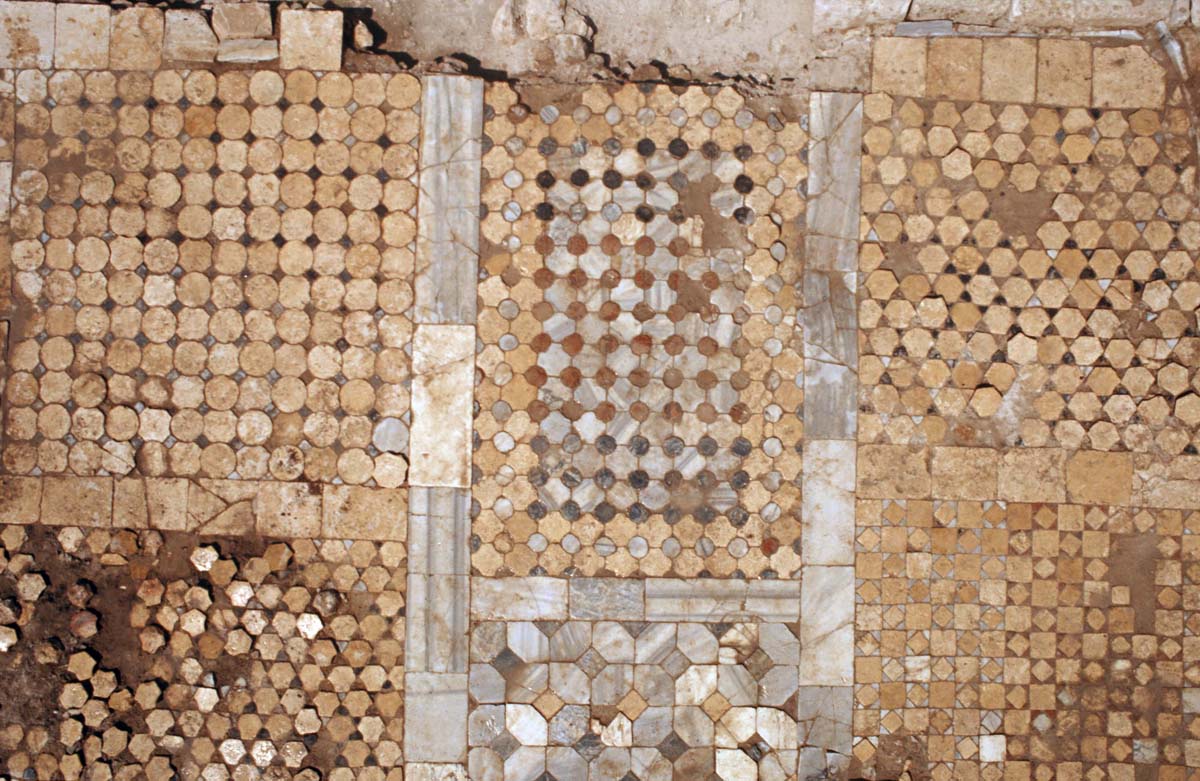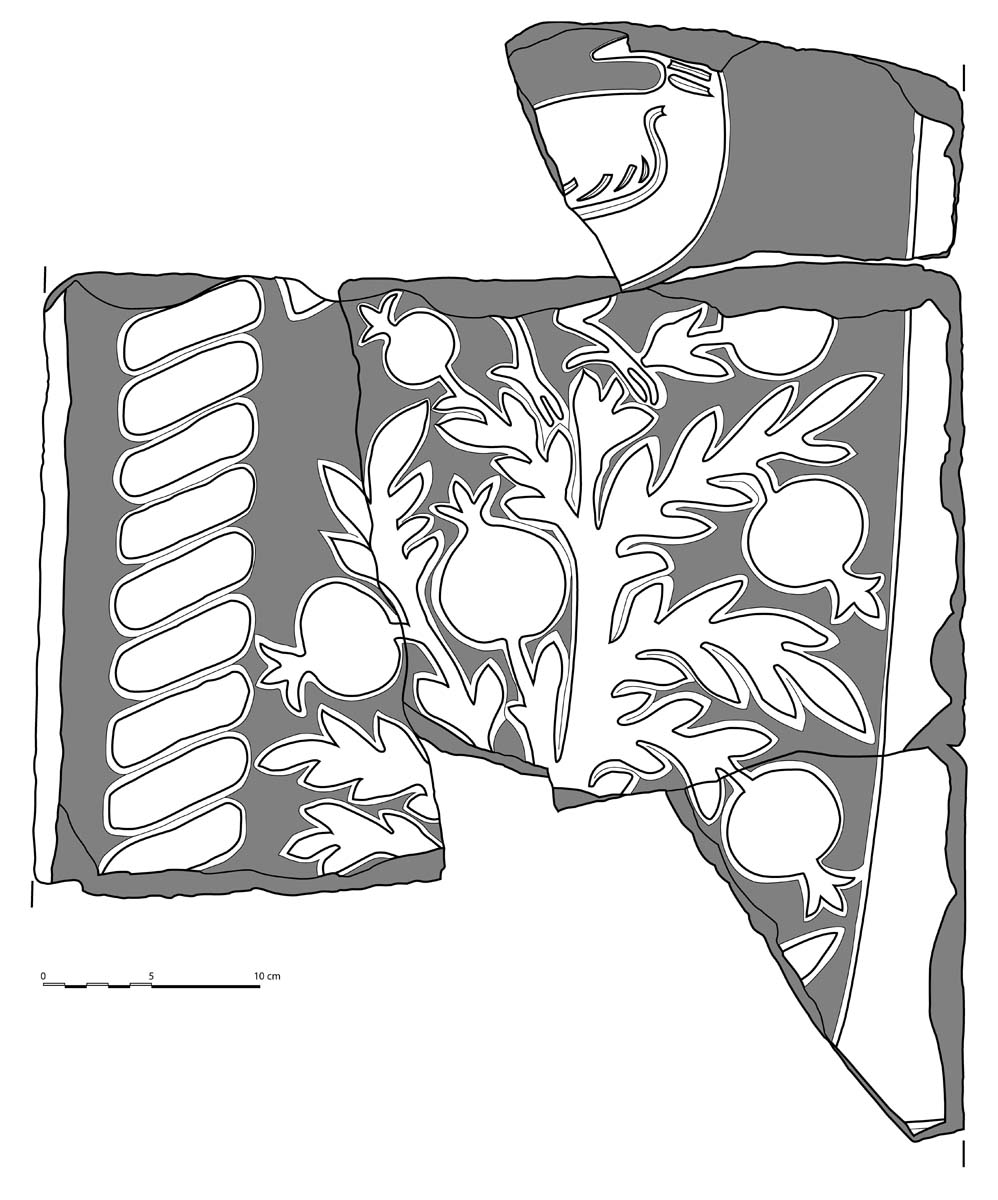At the end of the 6th century and in the first half of the 7th century the whole of the island of Cyprus underwent a period of prosperity which manifested itself, in particular, in the (re)construction of a number of religious edifices. This is the case with Amathus where the largest basilica is located by the sea. Therefore, the acropolis is less densely inhabited than the city below but its summit was entirely rebuilt after the razing of the temple and the other structures dedicated to Aphrodite.

Ground plan of the sanctuary (M. Schmid, J. Laragné / Archives EFA, 42009)
The section that is presently under excavation is laid out in a large quadrilateral measuring 60 x 46 meters whose northeastern corner is taken up by a small basilica that forms an almost perfect rectangle (25 x 24 m). A large portion of this space was formerly occupied by an open-air courtyard (atrium) at the center of which was dug a great cistern with a vaulted cover which, like the two other cisterns and the two ancient vases left there, served as a reservoir for storing water on a hill without springs. The church consists of three naves with apses in the central part, preceded by a narthex and exonarthex to which several annexes were adjoined, eight to the north and four to the south; elevated platforms were erected above the narthex and lateral naves.

Pavement in opus sectile (Ph. Collet / Archives EFA, Y.1440)

Plaque decorated with pomegranates (J. Humbert / Archives EFA, 33161)
Almost nothing remains – aside from the tiles – of the upper parts of the edifice, or the marble columns of the interior, however the paving is fairly well-preserved: it appears in the form of an opus sectile polychrome (ground composed of an assemblage of squares of marble, limestone and terracotta) in which certain elements were fragments of marble slabs with champlevé decoration (birds, plant motifs) which in all probability came from the decoration of the temple transformed into a church. It is not known whom the little basilica, that was only briefly in use, was dedicated to, because it was abandoned, as was the rest of the site, at the end of the 7th century.
A. Hermary, trans. A.M. Schroth-Daskalakis
